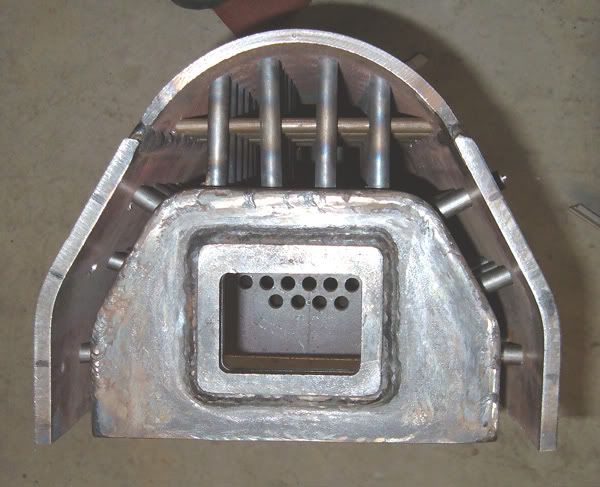I am from the same school as Marty - only about 5 years longer (had to repeat a few grades)....
That doesn't mean I know any more (doubtful), but have had plenty of time to know that anyone that 'skimps' on a few radial stays to make building a boiler 'easier' is what Ben Franklin used to call 'penny wise and pound foolinsh'
What does it cost in terms of time and material to put the proper number of stays into a boiler, no matter what the firebox configuration, to properly carry the load expected, unexpected and future as a result of corrosion?
$50 worth of material and welding time NOW can save you a $1000's in the future if you don't have to rip a boiler off and replace it prematurely - unless of course you are just building the boiler for someone else and don't care - or are providing a design for someone else's boiler that you are never going to have to maintain.

When I build a boiler, I put in enough stays to be sure that the resultant load on the mud ring as as low as I can make it - even if this means that I put in some stays that are not really 'necssary' to prevent wrapper crush, as is the case with some of the stays shown above that are welded to the bends in the inner wrapper.
What it is - $20 worth of material? Phooey - I spent more than that on 2 cans of paint.
There is nothing magic about boiler design for our little models. You build them strong from the correct materials, provide plenty of space for water circulation, plenty of stays and lots of cleanouts so that you can take care of the boiler once it is attached to the loco.
How complicated is that? Heck, even I can do it.
PS: the only girder stay design that I personally thought was worth a hoot was one that Bob Reedy did - had transverse girders that also were stays welded into the outer shell of the boiler. I personally don't think that they were easier to install than a bunch of radials (I've got one heck of an electric drill), but Bob's design was heck for strong and should last a lifetime+.
